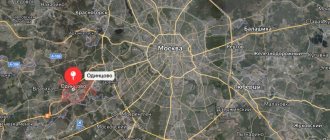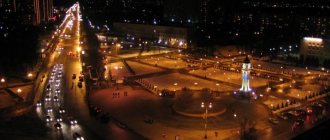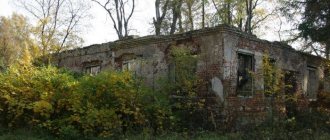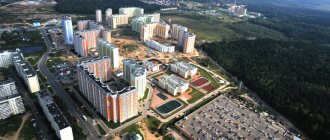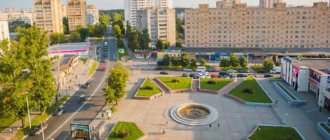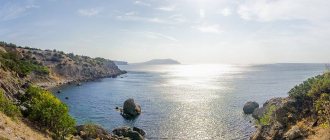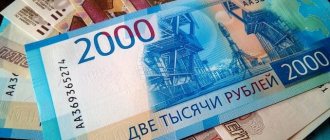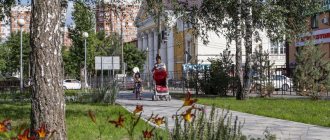Decisive changes: what are they?
According to the decision of the Council of Regions, in the near future, Balashikha will become the real part of the capital. The meeting was dedicated to the development of highways that are adjacent to the city and also located in nearby areas. The accession process is an inevitable and final decision. As of today, no changes are expected.
To translate these plans into reality, appropriate permission was obtained from higher officials. Due to this, it is possible to solve a large number of problems that are acutely facing the local administration. For example, it is possible to significantly reduce traffic jams, which have long been very annoying to the local population.
In any situation, a more comfortable stay is guaranteed. Mayor Balashikha declared with full confidence that it must definitely be annexed to Moscow. Although, there are some snags in all this.
In any situation, only citizens should decide this issue. According to the current rules, in order to implement such territorial changes, a referendum is required. Local residents must vote there. They must decide whether such changes are necessary for them or not.
We are talking about a citywide event, which is on the list of standard procedures when the situation described above arises. All such issues should be decided by people, and not by some authorities or individual bodies.
Citizens will decide
According to all the rules, for such territorial changes it is necessary to hold a referendum, in which residents will vote in due order: whether they approve of such changes or not. This citywide event is included in the list of standard procedures when such a situation arises. It is the people who must decide whether Balashikha will become part of Moscow or whether it will continue to be separate. It may be that for many people their current way of life is quite suitable. To decide whether Balashikha will join Moscow, they are still planning to hold a referendum in the fall, which will make the procedure objective and fair. According to preliminary surveys of the population, many are not against such changes. At the same time, elections will be held to elect a new Board of Deputies for the city.
Will Balashikha become part of Moscow or not?
Naturally, some citizens are quite suited to living in a secluded city. But others want to change something. To determine whether the above-described annexation will occur, it is recommended to hold an appropriate referendum. As a result, the entire procedure will be not only even, but also as objective as possible. According to preliminary surveys of the local population, the majority of residents are not at all against such changes. At the same time, it is simply impossible to do without holding appropriate elections.
Composition[ | ]
The Balashikha urban district includes 13 settlements[3].
| № | Locality | Type of settlement | Population |
| 1 | Balashikha[27] | city, administrative center | ↘507 307[4] |
| 2 | Dyatlovka | village | ↗196[28] |
| 3 | New Miletus | village | ↘620[28] |
| 4 | Pavlino | village | ↗96[28] |
| 5 | Pestovo | village | ↗135[28] |
| 6 | Poltevo | village | ↗264[28] |
| 7 | Purshevo | village | ↘2055[28] |
| 8 | Rusavkino-Popovschino | village | ↗93[28] |
| 9 | Rusavkino-Romanovo | village | ↗171[28] |
| 10 | Sable | village | ↗240[28] |
| 11 | Fedurnovo | village | ↘1814[28] |
| 12 | Fenino | village | →156[28] |
| 13 | Black | village | ↗4047[28] |
Until 2004, rural settlements of the modern urban district were part of the Chernovsky rural district of the Balashikha district.
What will all this lead to?
There are several quite important factors. They confirm predictions that Balashikha will still be part of the capital. Initially, the local population may be interested in the fact that in Moscow they will be able to:
- Receive a significantly larger pension.
- It's more profitable to get a job.
- Forget about numerous transport problems, etc.
Thanks to the connection, it will be possible to take advantage of the much-needed discounted travel. It is intended for students and elderly people. The annexation will also mean that the local population will be able to rent out or sell real estate at a completely different, more profitable and acceptable price. In connection with all this, the plan associated with the annexation of Balashikha to the capital is very popular with many local citizens.
Naturally, there are also citizens who do not need all of the above. Constantly hearing about what is happening in the capital, they are very much afraid that the construction business that may be started in their territory will significantly poison their lives. There will no longer be the peace to which they are accustomed.
The larger a modern city is, the much less it will cost an individual to vote. Once again, ordinary people simply won’t be asked anything. Nobody needs their consent. In a metropolis, amid crime, it is much easier, as they say, to get lost. All the numerous decrees sent from above will be categorical here.
Population[ | ]
| Population | ||||||
| 2008[14] | 2009[15] | 2010[16] | 2011[14] | 2012[17] | 2013[18] | 2014[19] |
| 192 837 | ↗199 684 | ↗225 381 | ↗231 395 | →231 395 | ↗245 173 | ↗257 355 |
| 2015[20] | 2016[21] | 2017[22] | 2018[23] | 2019[24] | 2020[25] | 2021[4] |
| ↗271 961 | ↗440 513 | ↗462 731 | ↗479 987 | ↗501 610 | ↗518 788 | ↘518 591 |
The population of the urban district after the merger with the abolished Zheleznodorozhny urban district as of January 1, 2022 was 518,591[4] people (as of 2015, within the new borders - 423,946 people[26]).
Urbanization[ | ]
97.69% of the population live in urban areas.
Are large-scale construction planned?
It is completely possible that Moscow developers will want to build a new building in the place where someone’s private house is now located. If Balashikha is nevertheless annexed to the capital, then all this could greatly disrupt the peaceful life of a huge number of citizens. For example, one day a bulldozer will come and simply demolish a house. He will destroy everything that has been created by one person for decades. But it’s not even worth talking about nature here. Shopping centers and new residential buildings may completely displace numerous forested areas. All this applies not only to spacious fields, but also to wonderful rivers.
What else could be bad in all this? Many authorities today speak confidently about all this. Although, people themselves still have time to think about their own decision. Does joining make any sense to them?
Moscow is a constantly developing and improving progressive city. Regardless of this, there is much more banditry as well as corruption. Modern business, which is associated with construction, can have a certain meaning only for individual citizens. In the first place, there is often a real thirst for profit.
If we talk about all this on the one hand, then technically this area can simply flourish. But on the other hand, it may turn out to be a platform for numerous games organized by modern oligarchs. All their thoughts are aimed at truly endless enrichment. Such actions can lead to a banal division of the market. The possibility of a real struggle for resources cannot be ruled out. As such, this issue requires careful and attentive thought.
It is also very important that citizens really understand exactly what is really happening. Under no circumstances is it recommended to fall for numerous beautiful slogans. Naturally, the above solution also has its own positive aspects. Although, there may be significantly fewer of them than the negative effects that arise.
What can be said about the convenience after joining? Is it worth annexing Balashikha to the capital? The distance between these two cities is only 40 km. You can get there with your own vehicle in just 1 hour and 20 minutes. Naturally, the accession itself has its own meaning. After all, most people still cover this distance every day, constantly commuting to work. Therefore, most of the lives of such people still take place in the capital. They are especially pleased that in the future they can take advantage of quite interesting benefits.
Balashikha
Video: Balashikha
Basic moments
Since ancient times, Balashikha has been a center of textile production. And today, various enterprises operate in the city, for example, a foundry and mechanical plant, an aviation corporation, etc.
The modern city of Balashikha grew up on the site where ancient villages and hamlets were previously located - the villages of Novoe, Pehra-Pokrovskoye, Pehra-Yakovlevskoye. Today, the most interesting part of the city for tourists is the New Quarter.
Tourists should visit Balashikha to admire the beautiful estates of Pehra-Yakovlevskoye, Gorenki and Poltevo, take memorable photographs against the backdrop of the wonderful nature of Balashikha and visit the magnificent churches - Alexander Nevsky, Transfiguration of the Lord, etc.
Climate
The climate of Balashikha is moderate continental, with pronounced seasonality. The number of cold days per year with temperatures below 0 is about 120-135 days from November to March. The coldest month of the year is January, the warmest is July.
Attractions
Sights of Balashikha - beautiful architectural ensembles dating back to the 18th-19th centuries. and located within the city. Thus, we recommend that tourists visit the estates of Gorenki (today a sanatorium), Pehra-Yakovlevskoe, Poltevo.
Other interesting sights of Balashikha are the churches: Intercession (XIX century), Nativity of the Virgin Mary (XIX century), Transfiguration Church with rich interior decoration and in the past - an iconostasis, in the painting of which the Italian master Stefan Torelli took part and which, unfortunately, has not been preserved.
We recommend that tourists pay attention to such attractions of Balashikha as museums: the Local History Museum in the regional center of the city, the Museum of Air Defense Forces, and the Art Gallery. It is also interesting to see the Radio Mast, and then take a walk in the Balashikha City Park and take wonderful photographs as a souvenir.
Excursions
Interesting excursions in Balashikha include a sightseeing tour of the city, a visit to the Gorenki estate, as well as other estates - Pehra-Yakovlevskoye, Trinity-Kainaradzhi with a magnificent church built in the style of French classicism.
Another interesting excursion in Balashikha is a visit to the Local History Museum, which reflects the history of the development of the region. A visit to the Art Gallery in Balashikha will also give tourists a lot of pleasure.
Story
The history of Balashikha began a very long time ago - for example, the first settlements in the vicinity of today's city existed in the 7th century BC. In the 10th century, Slavic tribes lived in this territory. Let us note that in Balashikha and its environs, scientists have discovered over 350 mounds, in particular, Vyatichi and Krivichi.
The most ancient part of modern Balashikha is the Novsky quarter, which until 2004 was the village of Novaya. Interestingly, the first mention of this settlement dates back to the 14th century. Soon other settlements appeared - the villages of Pehra-Yakovlevskoye and Pehra-Pokrovskoye, their names come from the tribe that lived in this fertile land back in the days of Vladimir Rus.
The history of Balashikha began in 1830: it was then that Prince Trubetskoy opened a cloth factory here. In 1837, the Balashin manufactory was founded. The region was gradually developed; in 1925, the settlement “Unification” appeared, intended for factory workers.
In 1939, the history of Balashikha as a city began thanks to the resolution of the Presidium of the Supreme Council. Balashikha included such settlements as the village of Pervomaisky, Gorenki, Grabari, etc. After the Great Patriotic War, active construction of the city and industrial development took place in Balashikha. In 1954, a Culture and Recreation Park was opened with attractions, a summer theater and a billiard room.
In 1960, the Balashikha district (part of it) joined Moscow.
Accommodation
Hotels in Balashikha are several hotels of the economy category, a night's stay in which will cost tourists from 350 rubles. These are Balashikha hotels such as “Adonis” and “Sport” on the territory of a sports club.
Another option is to stay at the Druzhba sanatorium, where you can improve your failing health.
Balashikha hotels of a higher category include the East Gate Hotel 4*. A day's stay in this hotel will cost tourists 4 thousand rubles.
Sports and active recreation
Active recreation in Balashikha includes playing billiards, bowling, walking around the city, and cycling.
There are 2 football teams in Balashikha. The city also hosts international junior tennis tournaments, as well as boxing tournaments.
Tourists can play hockey at the Balashikha Arena sports complex. A ski resort called “Fox Mountain” has been opened in the south of Balashikha. Not far from it is Q-Park, where you can go snowboarding.
In addition, tourists can enjoy the Balashikha equestrian sports complex and the Wake Family Park, where they can practice wakeboarding.
Transport
Public transport in Balashikha is an extensive network of bus routes (16 routes in total), minibuses, as well as a passenger taxi, which can be called from any city hotel. We draw the attention of tourists that the cost of travel should be discussed in advance.
Souvenirs
Balashikha souvenirs include refrigerator magnets, decorative plates, and cups with the symbols of the city.
Also interesting are souvenirs from Balashikha, such as locally produced textiles.
In addition, in Balashikha they make good souvenirs from wood - wall panels, chess, neat elegant boxes, etc.
It is interesting to take beautiful photographs of Balashikha estates and create a memorable photo album, which will also become an interesting gift from Balashikha.
How to get there
Tourists can get to Balashikha from Moscow in several ways:
- By car along Entuziastov Highway or Shchelkovskoye Highway. Balashikha is only 5 km from the Moscow Ring Road. But the travel time from the center of Moscow, taking into account, is about 40 minutes.
- By bus from the metro stations "Shchelkovskaya", "Yuzhnaya", "Partizanskaya", "Izmailovskaya", "Novogireevo". On average, the journey takes from 30 to 40 minutes.
- By train from Kursky station. Travel time is 40 minutes.
Expansion of Moscow for 2030 and new borders on the map. What's planned?
There are both disadvantages and positive aspects here. This petition has some valid as well as rational aspects. It is quite problematic to disagree with them. Additionally, students constantly travel to the capital, who will also benefit from the benefits offered.
Thus, most likely in the very near future Balashikha will turn out to be the real part of Moscow. Although, the final decision lies with the local population. They must decide what will happen next.
Where can you get a coronavirus test in the Moscow region for free?
Geography[ | ]
The area of the municipality is 243.98 km²[3].
The urban district of Balashikha borders on:
- the city of Moscow (in the west along the Moscow Ring Road),
- Mytishchi urban district (in the north-west),
- Pushkin urban district (in the north),
- Korolev urban district (in the north),
- urban district of Shchelkovo (in the northeast),
- Bogorodsky urban district (in the northeast and east),
- Ramensky urban district (in the south),
- Lyubertsy urban district (in the south),
- districts/municipal districts of Kosino-Ukhtomsky and Novokosino of Moscow (in the southwest),
- urban district of Reutov (in the southwest).
The territory of the urban district surrounds the Moscow district / municipal district Vostochny on all sides.
Textile factory and other pre-revolutionary enterprises of Balashikha
The history of the city of Balashikha dates back to 1830, in which Prince Trubetskoy, together with the merchant Pavel Moloshnikov, began building a small cloth factory. At first it was located in a wooden building built on the site of a water mill. In 1846, Pavel Moloshnikov re-equipped the factory, and it began to produce cotton textiles. The main production is located in a five-story brick building.
By 1850, the factory employed more than 500 workers and produced more than 5,000 pounds of yarn per year, which brought the owners about 130 thousand rubles of annual income. In 1850, the factory was equipped with a steam engine purchased from Great Britain. For its installation and operation, the English engineer Michael Lunn arrived in Balashikha, who remained the technical director of the factory for 45 years. In 1873, he became one of the co-founders of the Balashinskaya Manufactory Partnership. His companions were merchant manufacturers Mikhail Shcheglov, Pavel Shelaputin and Ivan Karzinkin. Two years later, the enterprise's fixed capital reached 600 thousand rubles. The number of workers in 1879 exceeded 900 people, in 1890 it amounted to 2,687 people, and in 1903 more than 3,000 people worked at the factory.
Gradually a factory village emerged. Its architectural appearance was finally formed in 1907-1910.
By the time the First World War began, the factory and the village of Balashikha had turned into a complex and branched economic organism, on the territory of which, in addition to production facilities, there were barracks-type dormitories for workers, a hospital facility, an elementary school and a workers' college, an almshouse, a railway station, a post office and a telegraph office. A power transmission line ran from Bogorodsk to Balashikha. And peat mining was carried out around Lake Biserova, supplying the factory steam engines with fuel.
In 1821, merchant Ivan Chetverikov founded a cloth factory nearby. Its production volumes in the first decades were very small. By the middle of the century, it employed 92 people. In 1903, it belonged to the Trading House of I.F. Petrov and I.V. Shcheglov, and there were 355 employees. In 1907, the factory was seriously damaged by a major fire. In 1908, a new building and water tower were erected. The architect Ivan Pozdeev worked on their project. Since 1903, he was the architect of the Cathedral of Christ the Savior in Moscow.
Where previously there was a water mill in the village of Gushchinka, at the beginning of the 20th century, manufacturer Alexander Pimenov founded a small enterprise that produced artificial sheepskin.
Convenience
Should it include such territories as Balashikha and Moscow? The distance between them is 40.7 kilometers. You can get there by car in 1 hour and 20 minutes if you drive along the Moscow Ring Road. Of course, joining makes sense, because many people from here still go to the capital every day to work. So most of their lives actually take place there. Moreover, they promise interesting benefits.
So here, as in any phenomenon in life, there are pros and cons. The petition has rational and correct sides that are hard to disagree with. In addition, students travel to Moscow from Balashikha to study at numerous universities located there. The area is densely populated, but so far there are no plans to build a metro from there. There are many new neighborhoods, the number of which is only expected to increase in the future. There are territories from which the path to elements of social infrastructure is quite difficult. This is due to the federally important highways passing there. That is why you still have to go to the capital.
Main directions
Every day, more than 15 pairs of electric trains run from early morning until late at night between Balashikha station and Kursky railway station in Moscow via Reutovo. The movement takes place every hour until lunch, and then the interval increases to one and a half hours.
© Artem Svetlov
Suburban trains
Suburban trains from Balashikha station go in the direction of Kursky station in Moscow:
- Balashikha — Moscow Kursk
- Balashikha — Reutovo
- Balashikha - Hammer and Sickle
- Balashikha - Construction, Moscow region.
- Balashikha — Novogireevo
- Balashikha - Chukhlinka
- Balashikha — Kuskovo
- Balashikha - Nizhny Novgorod (formerly Karacharovo)
- Balashikha - Gorenki
The train traffic diagram can be found on the Tutu website. RU.
Map of Balashikha with streets and houses
Studying the map of Balashikha with streets and houses, you will notice that the city has a very dense development: streets with residential buildings, shops and various infrastructure facilities are located quite closely.
- Lenin Avenue is the main one in the city. It starts at the street. Western and has a length of 3.56 km. It runs parallel to the Entuziastov Highway and intersects with the street. Parkovaya, Sovetskaya, K. Marx, Labor Reserves, and connects two microdistricts. – Balashikha-1 and Balashikha-2. In addition to residential buildings, squares, shopping centers, public gardens, along its length there are schools, children. gardens and sports facilities.
- Sovetskaya Street , which starts at Polevoy Proezd, stretches 3.56 km. Connects microdistrict. Balashikha-1/-2 and New World. It has intersections with Lenin Avenue, st. Krupskaya, Entuziastov Highway. On its sides there are residential buildings, shops, a fire station, schools, and factory buildings.
- Trubetskaya Street - (2.8 km) is laid through the microdistrict. Balashikha Park and Nikolsko-Trubetskoy quarter. It starts at Shchelkovskoye Highway, passes the Gorbovo quarter. This is an important thoroughfare, and apart from some houses, a cemetery and a temple, there are practically no buildings here. It ends with the final stop of public transport.
- Nekrasova Street on the map of Balashikha stretches for 820 m and divides the microdistrict. The southern one is divided into two parts – western and eastern. It starts at the Entuziastov Highway and runs from north to south. The buildings include residential buildings, numerous shopping centers, and the Yuzhnaya bus station. It ends near the Academy of the Strategic Missile Forces named after. Peter the Great.
- Sadovaya Street , built up with private houses, has a length of only 0.5 km. Starts at the street. Baby. The street runs parallel to it. Lipovaya, Rozhdestvenskaya, Sirenevaya and Pekhorskaya, near which the Shchelkovskoe highway passes.
- Avtozavodskaya Street - (1.4 km) runs through the Zheleznodorozhny district between industrial buildings and houses. Starts from st. Rabochaya, it is adjacent to the street. Polikakhina, Pionerskaya. The Center Plus residential complex stands nearby.
Improvements for residents
The public transport system within the city is not very well developed, which, of course, will change for the better if the connection occurs. For study, treatment and work, one way or another, you have to go to the capital. You even need to take your children far to kindergarten. The same goes for purchasing goods and services.
Of course, this situation can hardly be called convenient for the local population. Moreover, investment contributions in this area will increase. The county will be relieved when the two cities' transportation systems merge. You will need to spend less on a bus ride. In addition, plans will be created for the development of a new metro line in this direction. Although many fear the settlement of Moscow oligarchs, there is a positive side to the fight against corruption. Many leadership positions held by the district's ruling officials will be vacated.
